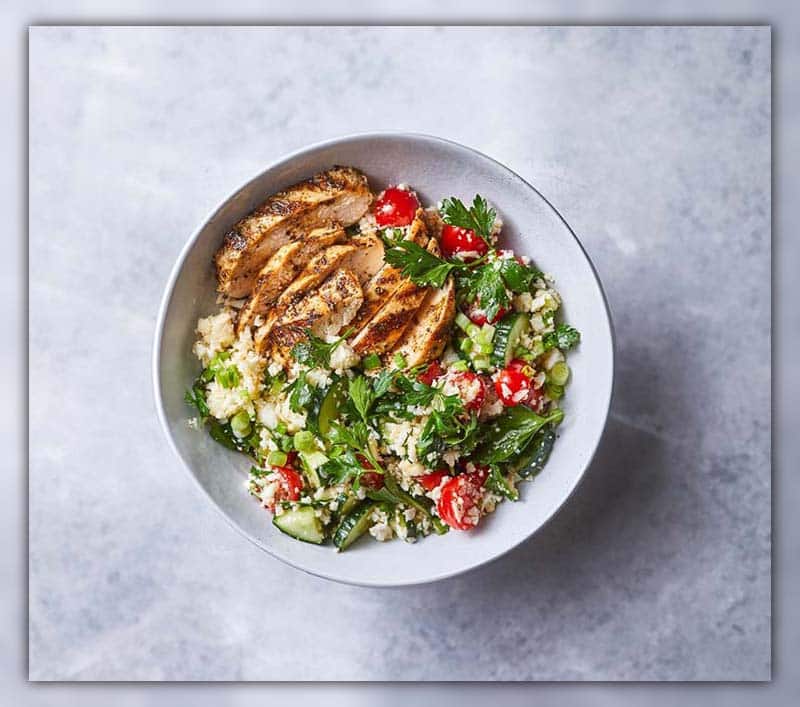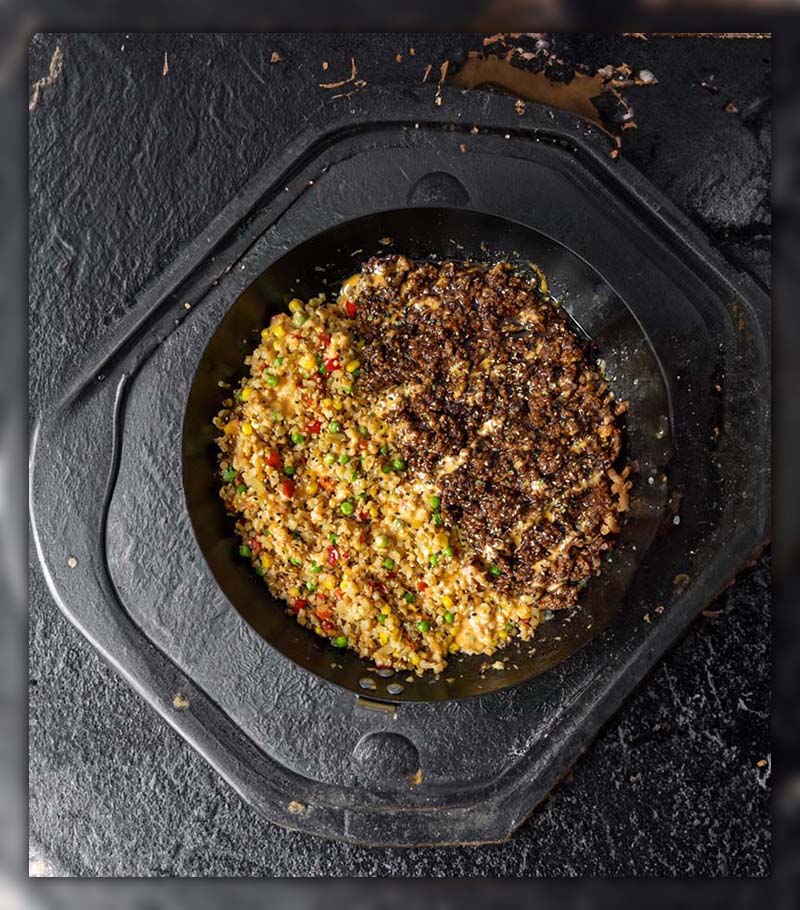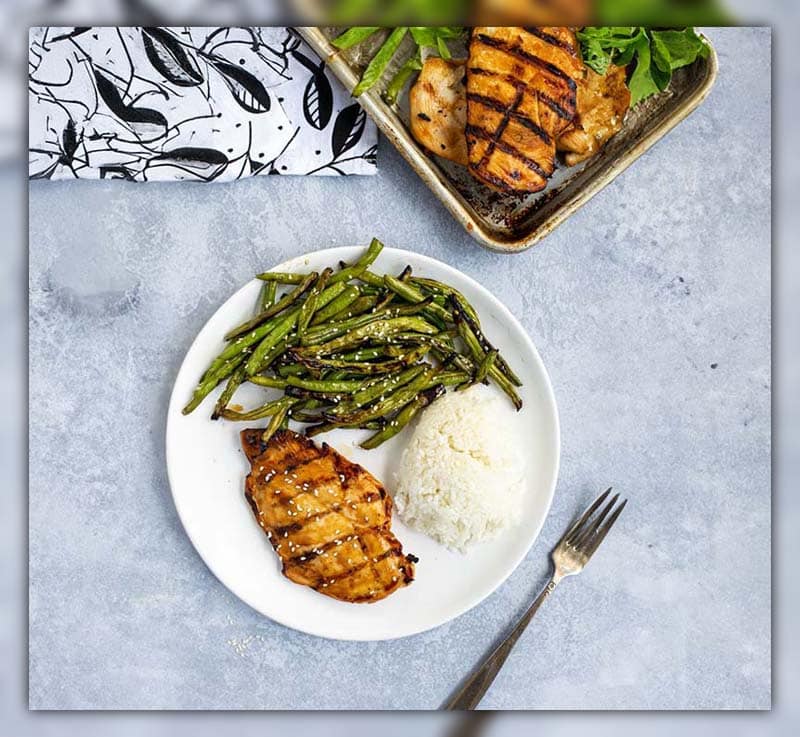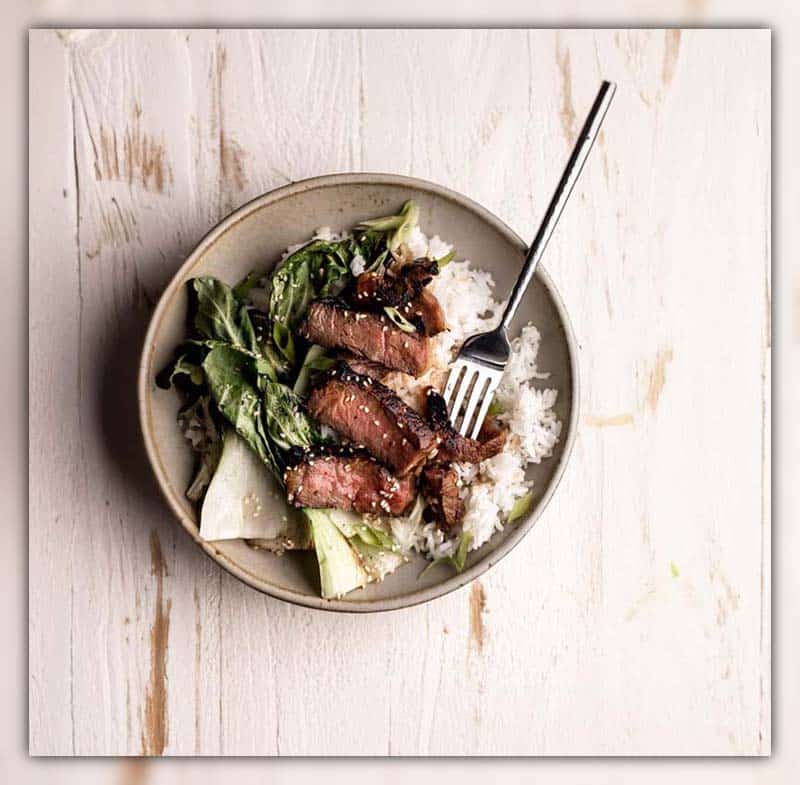Are you seeking a diet that aligns with your high-intensity fitness routine, aiming to maximize muscle gain and elevate performance? Are you in pursuit of an efficient approach to manage calories, simplify meal planning, and optimize macros? If you answered yes, delve into our blog as we unravel the secrets of the “Vertical Diet.”
Whether you’re a dedicated athlete, a bodybuilding enthusiast, or simply passionate about health and nutrition, our guideline might just be the transformative answer you’ve been searching for. Join us on this journey to discover tailored meal plans, expert insights, and enticing recipes that perfectly resonate with the core principles of the Vertical Diet!
What Is the Vertical Diet?

Vertical Diet stands as a specialized dietary approach tailored to support athletes engaged in high-intensity activities. Its primary objective is to facilitate substantial calorie intake required for weight gain, enhanced muscle mass, increased strength, and optimization of workout performance.
Vertical Diet Meal Plan: Food you should Follow

The Vertical Diet is characterized by a specific selection of foods that cater to the dietary needs of high-intensity athletes. The core elements of this meal plan include:
- White Rice: This serves as a primary source of quick energy due to its easy and rapid digestion.
- Red Meat: Preferably sourced from grass-fed bison and beef, red meat provides essential nutrients such as iron, zinc, selenium, and B vitamins. Additionally, it contributes to muscle building, a crucial aspect for athletes. Notably, proponents of the Vertical Diet advise against pre-ground beef, often made from scraps.
- Hormone-Free Chicken: A lean source of protein to support muscle growth and repair.
- Beef Tallow and Unprocessed Fats: These fats are advocated for their role in a balanced diet, emphasizing unprocessed options.
- Line-Caught Salmon: Rich in omega-3 fatty acids and high-quality protein.
- Eggs: A versatile protein source with essential vitamins and minerals.
- Full-Fat Dairy: Provides necessary fats and nutrients crucial for overall health.
- Low-Gas Vegetables: As per the FODMAP diet, low-gas vegetables like carrots, celery, spinach, cucumbers, and bell peppers are recommended to minimize digestive discomfort.
- Fruits: All fruits are included in the Vertical Diet, with a focus on low-FODMAP options like oranges, grapefruits, and strawberries.
- Sprouted or Soaked Legumes and Oats: These are allowed in small quantities, following sprouting or soaking to enhance digestibility.
Vertical Diet Meal Plan: Food you shouldn’t Follow

The Vertical Diet emphasizes specific exclusions to optimize its intended benefits for athletes engaged in high-intensity activities. Avoid the following foods while following the Vertical Diet:
- Brown Rice and Other Grains: In contrast to white rice, the Vertical Diet Foods discourages the consumption of brown rice and other grains.
- Processed Vegetable Oils: This includes all types of vegetable oils that undergo processing.
- Legumes: This category encompasses soy, beans, peas, lentils, and peanuts due to their potential digestive impacts.
- Onions and Garlic: These are excluded to adhere to the low-FODMAP approach, minimizing digestive discomfort.
- Coffee: While a common beverage, coffee is not part of the Vertical Diet’s Meal Plan recommended intake.
- Added Sugar and Sugar Alcohols: These are restricted to maintain optimal nutrition and energy levels.
- High-FODMAP Vegetables: Vegetables such as broccoli, cauliflower, cabbage, Brussels sprouts, and others categorized as high-FODMAP are avoided to support digestive ease and overall well-being.
Benefits of Vertical Diet

The Vertical Diet stands out for its emphasis on high-calorie consumption to fuel energy levels and promote muscle mass gain, presenting several benefits:
- Caloric Optimization: The Vertical Diet prioritizes a high-calorie intake, ensuring athletes and bodybuilders have sufficient energy stores to meet the demands of intense physical activities.
- Quick Energy Boost: White rice, a staple of the Vertical Diet, provides a rapid source of energy due to its easy and swift digestion. This is crucial for athletes requiring immediate energy bursts during workouts.
- Muscle Building Support: Red meat, a central component of the Vertical Diet, offers essential nutrients like iron, zinc, selenium, and B vitamins, promoting muscle development and aiding in muscle repair after intense training sessions.
- Efficient Nutrient Absorption: By focusing on easily digestible and nutrient-dense foods like lean meats and low-FODMAP vegetables, the Vertical Diet ensures efficient absorption of vital nutrients, aiding in overall health and well-being.
- Strategic Macronutrient Balance: The inclusion of protein-rich sources like eggs, chicken, and beef, coupled with beneficial fats from beef tallow and unprocessed fats, helps maintain a balanced macronutrient profile, essential for muscle growth and sustained energy.
Drawbacks of Vertical Diet

While the Vertical Diet offers potential benefits, it’s important to be mindful of certain drawbacks and considerations associated with its structure:
Limited Food Variety: The Vertical Diet’s emphasis on specific food choices may result in a limited variety of nutrients and flavors, potentially leading to dietary monotony and a lack of diverse micronutrients.
Potential Impact on Gut Health: The exclusion of high-FODMAP vegetables and legumes, combined with a focus on certain foods like red meat, may impact gut health, digestion, and gastrointestinal comfort for some individuals.
Affordability: Incorporating high-quality, specific food items like grass-fed bison and beef may be cost-prohibitive for some individuals.
Not Suitable for Vegetarians and Vegans: Given the reliance on animal-based protein sources.
Sample meal plan
Day 1:
Meal 1:

- Scrambled whole eggs with cheese, red peppers, spinach, and salt
- Raw baby carrots and raw almonds
- 4 ounces (120 ml) of cranberry juice
Meal 2:

- Ground sirloin beef and white rice cooked in chicken stock
- 4 ounces (120 ml) of orange juice
Meal 3:

- Chicken breast and sweet potato
- 4 ounces (120 ml) of orange juice
Meal 4:

- Grass-fed steak with white rice cooked in chicken stock
- 4 ounces (120 ml) of cranberry juice
Snack:
- Greek yogurt and baby carrots
Day 2:
Meal 1:

- Scrambled whole eggs with cheese, spinach, red peppers, and bone broth
- Boiled potatoes
- 4 ounces (120 ml) of cranberry juice
Meal 2:

- Ground bison with white rice, sweet potato, and bone broth
- 4 ounces (120 ml) of orange juice
Meal 3:

- Chicken breast with white rice, sweet potato, bone broth, and an orange
Meal 4:

- Grass-fed steak with white rice, potatoes, zucchini, and bone broth
- 4 ounces (120 ml) of cranberry juice
Snack:
- Whole milk and baby carrots
Day 3:
Meal 1:

- Scrambled whole eggs with cheese, spinach, red peppers, and salt
- Overnight oats made with yogurt, milk, and optional raw honey and nuts
Meal 2:

- Ground sirloin steak with white rice, peppers, and chicken broth
- 4 ounces (120 ml) of cranberry juice
Meal 3:

- Wild Atlantic salmon with white rice, spinach, peppers, and chicken broth
- Baby carrots and 4 ounces (120 ml) of orange juice
Meal 4:

- Grass-fed steak with white rice, sweet potatoes, and chicken broth
- 4 ounces (120 ml) of cranberry juice
Snack:

- Greek yogurt and berries
Idea People for Vertical Diet
The Vertical Diet is tailored to support individuals in their quest to build muscle and achieve a well-defined physique. Its emphasis on protein-rich foods and strategic macronutrient balance aligns with the dietary requirements of bodybuilders.
Those who meticulously monitor their macronutrient and caloric intake will appreciate the ease of tracking and modifying macros offered by the Vertical Sleeve Diet. This facilitates precise adjustments in line with evolving fitness goals.
People Should Avoid Vertical Diet?

It is advisable to avoid the Vertical Diet if you fall into the following categories:
- Individuals Prone to Heart Issues: The potential high intake of saturated fats from red meat may not align with heart-healthy dietary recommendations.
- Those Seeking Moderate Caloric Intake: The diet’s primary objective is to facilitate increased calorie consumption, which may not align with your desired caloric goals.
- Individuals Looking to Lose Weight: The diet is designed to support muscle gain and energy optimization. Its emphasis on increasing body weight contradicts the calorie deficit required for effective weight loss.
Vertical Diet Recipes
Elk Monster Mash Recipe:
Ingredients:

- 0.5 tablespoons Beef Tallow
- 5.5 ounces Sweet Potatoes
- 1 Red Bell Pepper
- 7 ounces Zucchini
- 8 ounces Ground Elk
- 1 Cup Beef Bone Broth
- 0.5 tablespoons Salt
- 0.25 tablespoon Pepper
- Oregano (to taste)
- Paprika (to taste)
- Cayenne (to taste)
- Chili Powder (to taste)
- [OPTIONAL] 1 to 3 ounces White Rice
Cooking Directions:
- Place a cast iron or pan on medium heat.
- Chop sweet potatoes, red bell peppers, and zucchini into 1/4 inch pieces.
- Heat beef tallow in the pan for 2 – 3 minutes.
- Add vegetables to the pan and spread out.
- Scale and prepare ground elk for cooking.
- After 5 – 7 minutes, when vegetables begin to brown, move them to one side of the pan and add ground elk to the other side.
- Chop and mash the ground elk for even cooking.
- After 3 – 4 minutes of browning, mix vegetables and ground elk.
- Add salt, pepper, paprika, oregano, cayenne, and any other desired low FODMAP seasonings. Stir well.
- Pour in beef bone broth.
- [OPTIONAL] Stir in pre-cooked rice to adjust total caloric or carbohydrate intake.
- Allow to simmer for 2 – 3 minutes, then serve and enjoy!
Lamb Monster Mash Recipe:
Ingredients:

- 0.5 tablespoons Olive Oil
- 5.5 ounces Sweet Potatoes
- 1 Red Bell Pepper
- 8 ounces Ground Lamb
- 1 Cup Chicken Bone Broth
- 0.5 tablespoons Salt
- 0.25 tablespoon Pepper
- Oregano (to taste)
- Paprika (to taste)
- Cayenne (to taste)
- Chili Powder (to taste)
- [OPTIONAL] 1 to 3 ounces White Rice
Cooking Directions:
- Place a cast iron or pan on medium heat.
- Chop sweet potatoes and red bell pepper into 1/4 inch pieces.
- Heat olive oil in the pan for 2 – 3 minutes.
- Add vegetables to the pan and spread out.
- Scale and prepare ground lamb for cooking.
- After 5 – 7 minutes, when vegetables begin to brown, move them to one side of the pan and add ground lamb to the other side.
- Chop and mash the ground lamb for even cooking.
- After 3 – 4 minutes of browning, mix vegetables and ground lamb.
- Add salt, pepper, paprika, oregano, cayenne, and lemon pepper. Stir well.
- Pour in chicken bone broth.
- [OPTIONAL] Stir in pre-cooked rice to adjust total caloric or carbohydrate intake.
- Allow to simmer for 2 – 3 minutes, then serve and enjoy!
Conclusion
In conclusion, the Vertical Diet is a powerhouse nutritional approach tailored for those craving enhanced muscle growth, elevated energy, and simplified meal tracking. Its emphasis on strategic calorie consumption and nutrient-rich foods makes it a go-to for athletes and fitness aficionados.
For more in-depth insights, meal plans, and enticing recipes crafted to align with your fitness journey, explore our blogs at BodyfitNT. Elevate your understanding of health and nutrition, one blog at a time. Stay fueled, stay fit!
Maybe you care about:
- Kickstart Weight Loss: Your 30-Day Transformation Plan

Born on July 26, 1960, Professor Tim Olds is a leading authority in the field of health sciences, focusing on exercise science, nutrition, and well-being. As the Bradley Distinguished Professor at the University of South Australia, his research offers pivotal insights into the effects of physical activity, diet, and lifestyle on health outcomes for both men and women.
Having completed two PhDs, one in French Studies and the other in exercise science, Professor Olds has uniquely blended his academic background to explore the multifaceted connections between human behavior, physical fitness, and nutrition. His work in mathematical modeling of cycling performance, anthropometry, and trends in fitness and fatness has informed strategies for weight management and healthy living.
Professor Olds served as the Project Director for the Australian National Nutrition and Physical Activity Survey, examining how diet and physical activity influence health on a national scale. His work on the ADAPT Project, focusing on 3D anthropometry, further showcased his innovative approach to understanding human physicality.
With numerous influential publications, Professor Olds has contributed substantially to the public’s understanding of diet, weight loss, and personalized fitness strategies. His findings have been instrumental in shaping health policies and behavioral change programs aimed at improving individual and community wellness.
From exploring women’s health concerns to understanding men’s fitness needs, Professor Olds’s research transcends gender barriers and offers a comprehensive view of the role of exercise and nutrition in enhancing life quality. His enduring commitment to health education and advocacy continues to inspire people to make informed decisions for a balanced and healthy life.
Professor Tim Olds’s trailblazing work stands as a vital resource for anyone interested in embracing a healthier lifestyle, understanding the science of physical activity, or pursuing effective strategies for diet and weight loss. His academic excellence and practical wisdom make him an essential voice in the ongoing conversation about health and well-being in the modern world.
PUBLISHED ARTICLES
- Olds, T. (2012). Evidence for a Sugars-to-Mental Health Pipeline. Atherosclerosis Supplements, 13(4), 29-30.
- Olds, T., Maher, C., & Zumin, S. (2011). The evolution of screen time: What’s next? Journal of Physical Activity and Health, 8(2), 236-244.
- Olds, T., Ferrar, K., Schranz, N., & Maher, C. (2013). Obese adolescents are less active than their normal‐weight peers, but wherein lies the difference? Journal of Adolescent Health, 53(6), 768-774.
- Olds, T., Maher, C., & Matricciani, L. (2010). Sleep duration or bedtime? Exploring the relationship between sleep habits and weight status and activity patterns. Sleep, 33(12), 1576-1581.
- Olds, T., Ridley, K., & Dollman, J. (2006). Screenieboppers and extreme screenies: The place of screen time in the time budgets of 10–13 year‐old Australian children. Australian and New Zealand Journal of Public Health, 30(2), 137-142.
These published articles reflect Professor Tim Olds’ contributions to various aspects of physical activity, sedentary behavior, and health-related research. They provide insights into the intricate relationship between lifestyle choices and health outcomes

